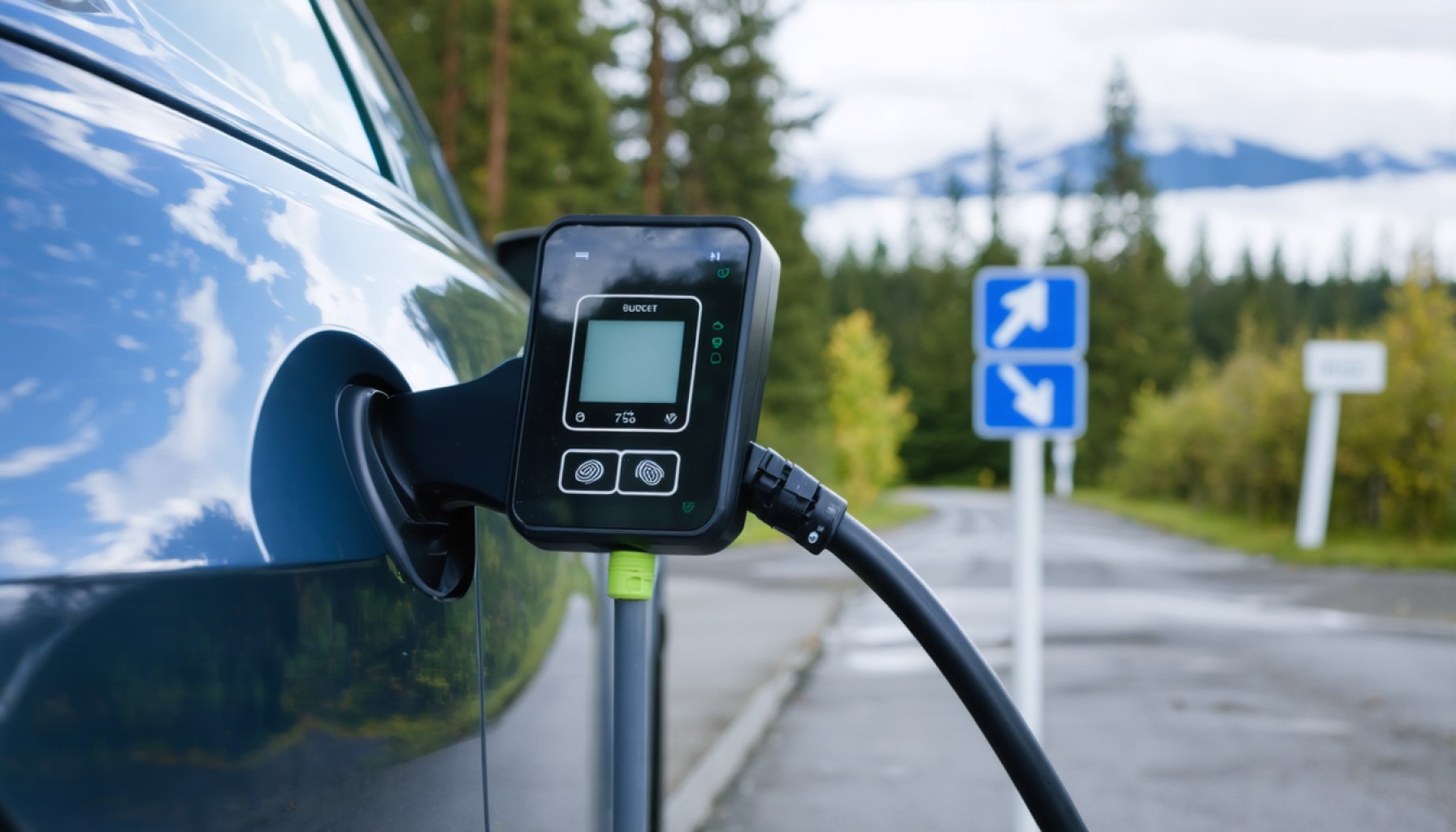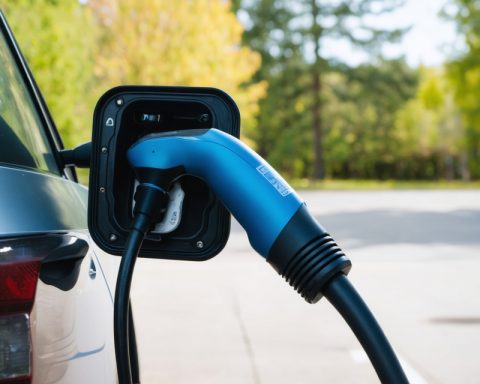- British Columbia faces a $1.8 billion deficit due to the removal of the federal carbon tax.
- The future of CleanBC EV rebates, offering up to $4,000 for electric vehicles, is uncertain.
- These incentives have been crucial in promoting eco-friendly transportation and environmental sustainability.
- Budget cuts may threaten these rebates, creating concerns about green transportation’s affordability.
- Eligibility for the rebates is income-based, aimed at making EVs accessible beyond the affluent.
- Nationwide, the inconsistency in EV rebate programs reflects tensions between environmental goals and economic constraints.
- Removing incentives may slow progress in climate change efforts and affect lower-income households.
- Policy decisions today will significantly impact both environmental and economic futures, emphasizing the need for sustainable support.
A fiscal storm is brewing over the scenic landscapes of British Columbia, as the removal of the federal carbon tax leaves the province grappling with a $1.8 billion deficit. With the CleanBC EV rebates squarely in the crosshairs, the future of green transportation incentives hangs in the balance.
The province has long been a beacon for sustainability, offering incentives of up to $4,000 for electric vehicles (EV) that have invigorated the clean energy transition. These rebates not only reduce the upfront cost of adopting eco-friendly technology but also signal British Columbia’s commitment to environmental stewardship.
However, with a budgetary chasm now unfolding, the provincial powers must sift through expenditures with the meticulousness of a jeweler examining precious stones. Energy Minister Adrian Dix underscored the gravity of the situation, suggesting that cuts to these revered programs could be imminent. The ominous possibility of halting EV rebates looms large, sending ripples of concern through the community.
For those eager to shift toward sustainable living, the rebates remain a vital economic lever. Currently, eligibility hinges on income, with full benefits reserved for earners making $80,000 or less and partial rebates for those topping out at $100,000 annually. This scaled approach aims to democratize access to EVs, ensuring that green choices aren’t the exclusive domain of the affluent.
Beyond the rugged mountains and lush forests of B.C., the fate of similar programs across Canada illustrates a turbulent landscape for electric vehicle incentives. Nationwide, the withdrawals and rejuvenations of EV rebates paint a patchwork quilt of intentions, revealing an essential tension between environmental goals and economic realities.
The deeper implication of these financial recalibrations lies not just in ecology, but in economy. Sustainable practices often hinge on strategic incentives; thus, withdrawing them could slow momentum in combating climate change, disproportionately deterring lower-income households from making environmentally conscious decisions.
As British Columbians await clarity, the situation underscores a pivotal moment for policy-makers who must weigh fiscal responsibility against green promises. The decisions made today will echo in tomorrow’s environmental and economic outcomes, posing the perennial question of whether a greener path can also be a prosperous one.
In this era of uncertainty, the guiding principle remains clear: sustainability requires steady encouragement. Whether through preserving critical incentives or innovating new solutions, the responsibility to foster a more sustainable future cannot waver, even under financial strain.
British Columbia’s Green Transport Dilemma: A Fiscal Storm and Its Impact on EV Incentives
Introduction
As British Columbia navigates a looming $1.8 billion deficit, the province finds itself at a crossroads concerning its sustainability programs, notably the CleanBC EV rebates. The potential cutbacks in these incentives pose significant questions about the future of green transportation and its role in addressing climate change. Let’s delve deeper into the implications, understand the stakes, and explore possible solutions.
The Importance of EV Rebates
Electric vehicle (EV) rebates have played a pivotal role in promoting sustainable transportation in British Columbia. By offering incentives up to $4,000, the province has made EV adoption accessible to a broader audience, underscoring its commitment to environmental initiatives. However, with budget constraints threatening these programs, it becomes vital to assess other dimensions that weren’t fully explored in the original article.
How-To Steps & Life Hacks for Adopting Green Transportation
1. Consider Pre-Owned EVs: Even without rebates, purchasing a used EV can be more affordable and still contribute to reducing carbon emissions.
2. Explore Leasing Options: Leasing an EV could offer a lower-cost entry into sustainable vehicle ownership without a significant upfront investment.
3. Utilize Ride-Sharing: Incorporate sustainable practices into daily life by opting for ride-sharing services that use EVs, balancing convenience and eco-friendliness.
Real-World Use Cases
Across Canada, various provinces implement their own EV incentive schemes. For instance, Quebec and Ontario’s programs have shown effectiveness in increasing EV adoption, providing a framework for evaluating British Columbia’s efforts.
Reviews & Comparisons
When comparing EV models, it’s crucial to evaluate factors such as range, charging infrastructure, and maintenance costs. Brands like Tesla, Nissan, and Chevrolet offer diverse options that align with different budgetary needs and environmental goals.
Market Forecasts & Industry Trends
The global EV market is expected to grow significantly, projected to reach $802.81 billion by 2027, according to Allied Market Research. This growth underscores the increasing demand and technological advancements that will continue to shape the industry.
Controversies & Limitations
One of the critical challenges facing EV adoption is the current charging infrastructure, which, although improving, still requires substantial investment to become fully robust and accessible in rural areas. Additionally, while EVs themselves are environmentally friendly, lithium-ion battery production remains resource-intensive.
Insights & Predictions
As financial strains press on policy-makers, an alternative approach might include incentivizing other green technologies such as public transport upgrades or energy-efficient home retrofits, shifting focus towards a more holistic view of sustainability.
Security & Sustainability
Investing in renewable energy sources to power charging infrastructure could enhance the long-term sustainability of EVs. Encouraging innovations such as battery recycling and second-life applications also plays a crucial role in addressing environmental impact concerns.
Pros & Cons Overview
– Pros: Reduction in greenhouse gas emissions, lower operating costs, contribution to cleaner air and environmental health.
– Cons: High initial cost, range anxiety, limited charging stations in certain areas.
Conclusion
To maintain momentum in the green transition, policy-makers should consider hybrid solutions, pairing fiscal responsibility with sustainable advancements. This could include scaled rebates, enhanced public transport infrastructure, and further investments in clean technology.
Quick Tips
– Stay informed about provincial and federal policy changes affecting EV incentives.
– Consider community initiatives that promote collective environmental responsibility, such as carpool networks or solar panel cooperatives.
For more insights on environmental policy and technology, visit British Columbia’s Main Website.
Actionable Recommendations
– Advocate for continued support of sustainable programs by contacting local representatives.
– Monitor opportunities for incentives, rebates, and tax credits available at municipal and federal levels.
By weighing the needs of today against the possibilities of tomorrow, British Columbia can forge a path that honors both environmental stewardship and economic stability.












